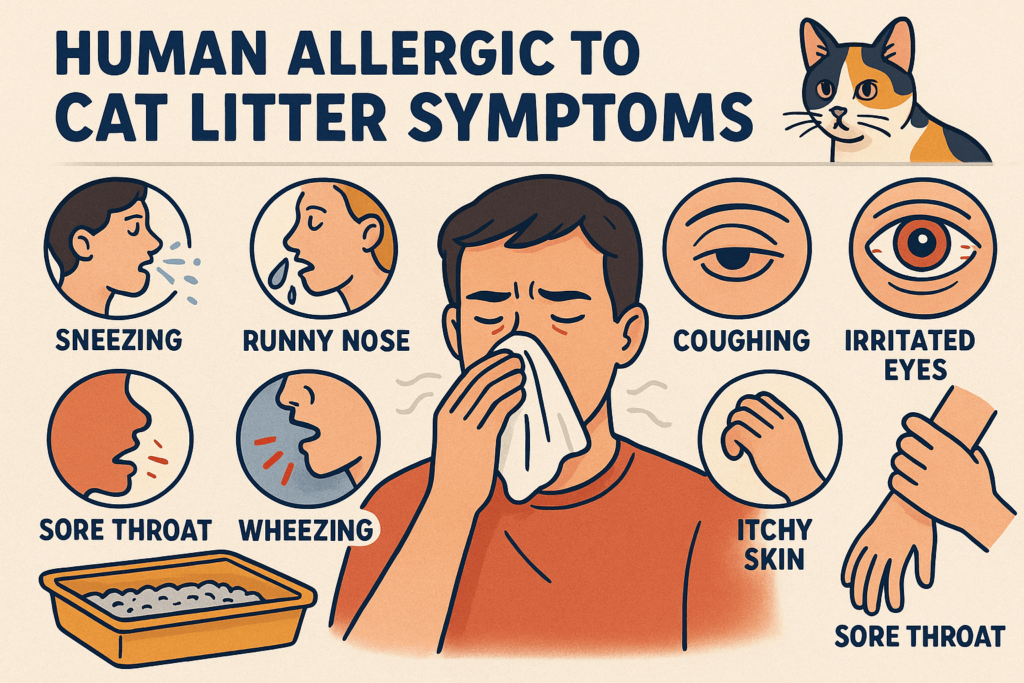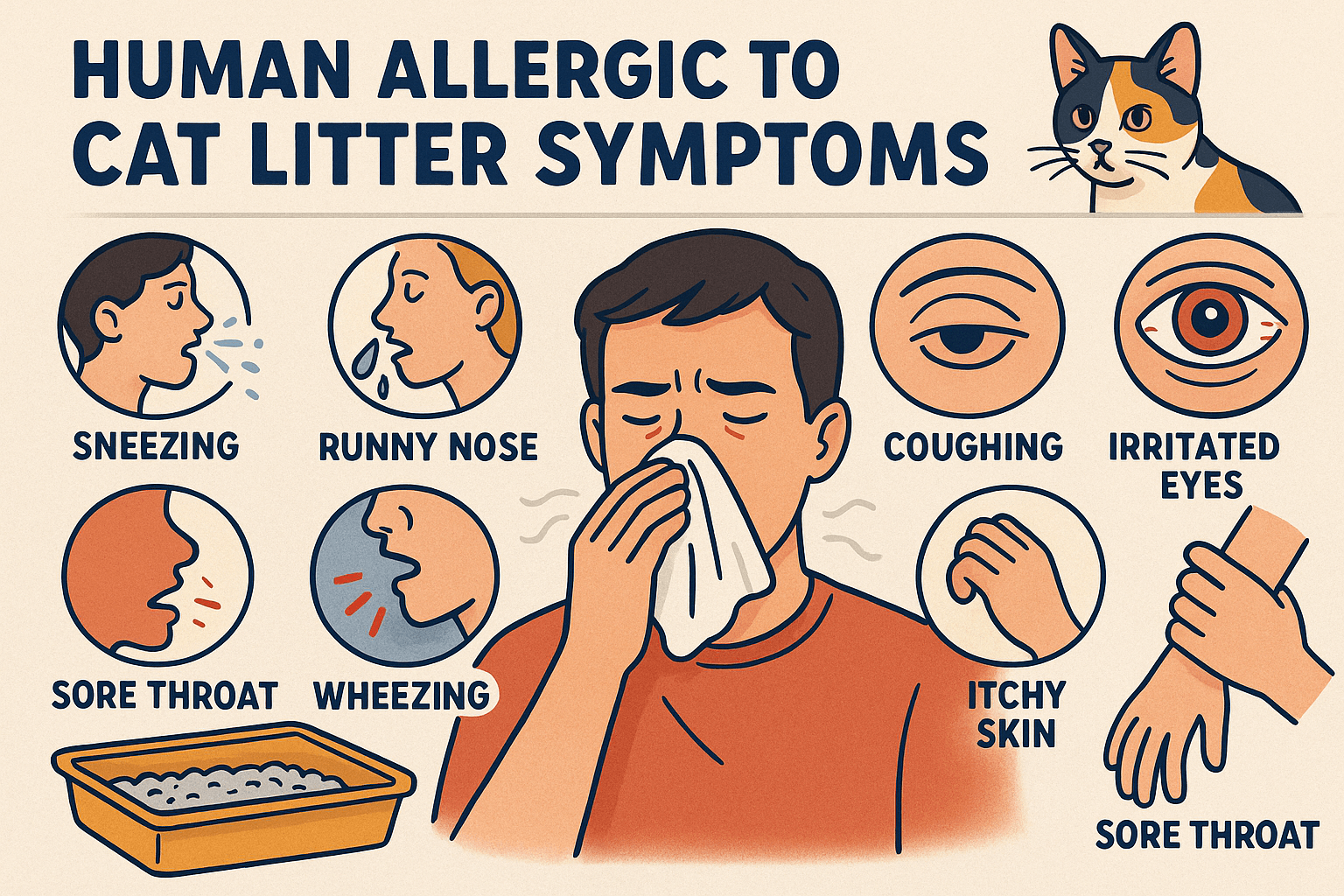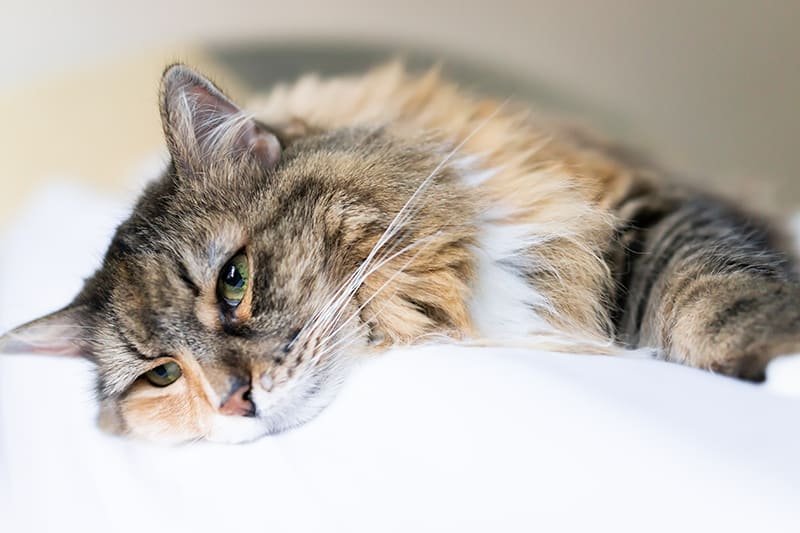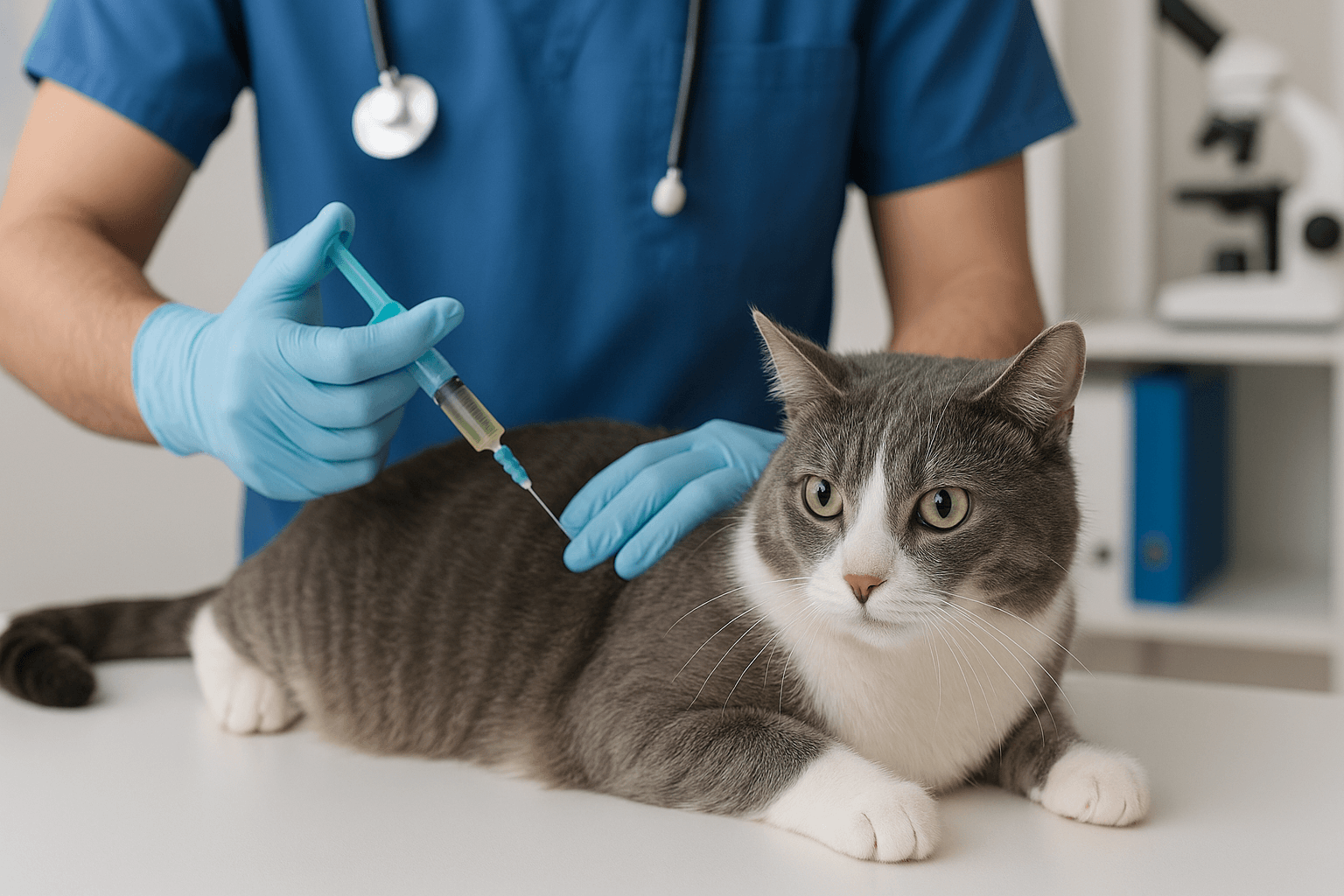Human Allergic to Cat Litter Symptoms
For many cat owners, the joy of having a feline companion can sometimes come with unexpected challenges—like allergies. While most people associate cat allergies with dander or fur, cat litter can also be a surprising culprit. Dust, chemicals, and even mold in certain types of litter can trigger allergic reactions in sensitive individuals. Recognizing the symptoms of a cat litter allergy is crucial for maintaining both your health and your bond with your pet. In this blog post, we’ll explore common signs of an allergic reaction, tips for managing symptoms, and alternative solutions to keep your home—and your respiratory system—healthy.
Expert Opinion on Cat Litter Allergies
“Allergies to cat litter can be caused by a variety of factors, including dust, fragrances, and the materials used in the litter itself. Dust from cat litter can contain particles of cat dander, which is a common allergen for many people.”
– Dr. Jess
Common Symptoms of Cat Litter Allergies
Cat litter allergies can manifest in various ways, affecting your respiratory system, skin, and overall well-being. If you suspect you’re allergic to your cat’s litter, here are some telltale signs to watch for.
Sneezing and Runny Nose:
Dust from cat litter can irritate nasal passages, leading to frequent sneezing and a persistent runny nose.Watery or Itchy Eyes:
Allergens in the litter may cause redness, watering, or itching in the eyes, making it uncomfortable to focus on daily tasks.Coughing or Wheezing:
Fine particles inhaled from dusty litters can trigger coughing fits or wheezing, especially in individuals with asthma.Skin Irritation or Rashes:
Direct contact with certain types of litter can cause itching, redness, or rashes on exposed skin.Difficulty Breathing:
In severe cases, inhaling allergens may lead to shortness of breath or chest tightness, requiring immediate medical attention.
If you experience any of these symptoms after handling or being near cat litter, it’s important to address the issue promptly to protect your health.

How to Identify the Source of Your Allergy
Determining whether your symptoms stem from cat litter or another allergen can be tricky. Here are steps to help pinpoint the source of your discomfort.
Observe Timing of Symptoms:
Pay attention to when your symptoms occur. If they worsen after cleaning the litter box or scooping waste, it could indicate a litter-related allergy.Switch to a Different Litter Type:
Try using a hypoallergenic or low-dust litter temporarily to see if your symptoms improve.Check for Cross-Reactions:
Some people may react to both cat dander and litter dust simultaneously. Isolate potential triggers by keeping your cat out of certain rooms.Consult an Allergist:
A professional allergist can conduct tests to confirm whether you’re allergic to specific components found in cat litter.Monitor Environmental Factors:
Other household products, such as air fresheners or cleaning sprays, might exacerbate your symptoms. Rule them out before concluding it’s the litter.
Identifying the exact cause of your allergy empowers you to take targeted action and find relief.
Check this guide 👉Does Cat Litter Deter Mice? Best 7 Expert Tips!
Check this guide 👉Can You Use Dirt for Cat Litter? Best 7 Expert Tips!
Check this guide 👉How Big Should a Cat Litter Box Be? Best 7 Expert Tips!
Symptoms of Cat Litter Allergies | Tips for Managing Symptoms |
|---|---|
Sneezing and runny nose | Use hypoallergenic or low-dust litter |
Watery or itchy eyes | Wear gloves and a mask while cleaning |
Coughing or wheezing | Keep the litter box in a well-ventilated area |
Skin irritation or rashes | Wash hands thoroughly after handling litter |
Difficulty breathing | Consult a doctor for severe reactions |
Best Practices for Reducing Cat Litter Allergens
If you’ve confirmed that you’re allergic to cat litter, don’t worry—there are plenty of strategies to minimize exposure and alleviate symptoms.
Choose Dust-Free Litter Options:
Opt for litters labeled “dust-free” or made from natural materials like corn, wheat, or paper to reduce airborne particles.Clean the Litter Box Regularly:
Scoop waste daily and change the litter frequently to prevent mold growth and odor buildup.Ventilate Your Home:
Ensure proper airflow in areas where the litter box is kept to disperse allergens and improve air quality.Delegate Litter Duty:
Ask another household member who isn’t allergic to handle litter maintenance tasks.Use Air Purifiers:
Place an air purifier near the litter box to capture allergens and keep the surrounding air clean.
Implementing these practices can significantly reduce allergen exposure and create a healthier living environment for everyone.
Alternative Solutions for Sensitive Individuals
For those with severe sensitivities, traditional cat litter may not be a viable option. Fortunately, there are alternatives designed to accommodate allergy sufferers.
Biodegradable Litters:
Made from renewable resources like wood chips or grass, these litters break down easily and produce minimal dust.Silica Gel Crystals:
Silica-based litters absorb moisture efficiently and generate less dust compared to clay-based varieties.Automatic Litter Boxes:
Investing in an automatic litter box reduces manual cleanup, limiting your exposure to allergens.Litter Box Enclosures:
Cover the litter box with a hood or enclosure to contain dust and odors within a confined space.Frequent Handwashing:
Always wash your hands thoroughly after interacting with the litter box to remove any lingering allergens.
Exploring these alternatives ensures that you can enjoy life with your cat without compromising your health.
Common Mistakes When Dealing with Cat Litter Allergies
Avoiding common mistakes can make managing cat litter allergies much easier. Here’s what to avoid:
Using Strongly Scented Litters:
Artificial fragrances can irritate sensitive individuals further. Stick to unscented or naturally scented options instead.Neglecting Regular Cleaning:
Infrequent litter changes increase allergen buildup. Aim to clean the box at least once daily.Placing the Litter Box in Poorly Ventilated Areas:
Lack of airflow traps allergens indoors. Choose open spaces with good circulation.Ignoring Personal Protective Gear:
Forgetting to wear gloves or masks exposes you directly to allergens. Always prioritize safety gear.Overlooking Professional Advice:
Self-diagnosing can delay effective treatment. Seek guidance from an allergist for tailored solutions.
By avoiding these pitfalls, you can better manage your symptoms and create a safer environment.
Benefits of Switching to Hypoallergenic Cat Litter
Making the switch to hypoallergenic litter offers numerous advantages beyond reducing allergy symptoms.
Improved Air Quality:
Low-dust formulas minimize airborne particles, promoting cleaner indoor air.Reduced Odor Problems:
Many hypoallergenic litters excel at controlling odors without relying on harsh chemicals.Eco-Friendly Options Available:
Brands often use sustainable materials, aligning with environmentally conscious lifestyles.Better Suitability for Multi-Pet Homes:
Hypoallergenic litters cater to households with multiple pets and varying sensitivities.Enhanced Comfort for Owners:
Less irritation means more time enjoying your pet and less time worrying about symptoms.
Switching to hypoallergenic litter benefits not just humans but also the planet and pets alike.
Tips for Introducing New Litter Without Stressing Your Cat
Transitioning to a new type of litter requires careful planning to avoid confusing or upsetting your cat.
Mix Old and New Litter Gradually:
Combine old and new litter in the box to allow your cat to adjust to the texture and scent slowly.Maintain Consistent Placement:
Keep the litter box in its usual location to prevent added stress during the transition period.Offer Multiple Boxes Temporarily:
Provide one box with the old litter and another with the new litter to give your cat a choice.Reward Positive Behavior:
Praise your cat or offer treats when they use the new litter successfully.Monitor for Changes in Habits:
Watch for signs of refusal or distress, and revert to the original plan if needed.
With patience and consistency, introducing new litter can go smoothly, ensuring harmony for both you and your feline companion.
Frequently Asked Questions About Cat Litter Allergies
Can I develop an allergy to cat litter over time?
Yes, sensitivities can develop suddenly, even if you’ve used the same litter for years.
Are all types of cat litter equally likely to cause allergies?
No, dusty or heavily scented litters are more likely to trigger reactions than low-dust or unscented options.
What should I do if my symptoms persist despite switching litters?
Consult an allergist to rule out other potential causes, such as cat dander or environmental factors.
Is it safe to use gloves while handling cat litter?
Yes, wearing gloves protects your skin from direct contact with allergens and harmful bacteria.
Can children or elderly family members be more affected by cat litter allergies?
Yes, individuals with weaker immune systems or pre-existing respiratory conditions may experience heightened sensitivity.
Finding Harmony Between Cats and Allergy Management
Living with a cat doesn’t have to mean sacrificing your health. By understanding the symptoms of cat litter allergies and implementing practical solutions, you can strike a balance that works for both you and your furry friend. Whether through switching to hypoallergenic litter, improving ventilation, or exploring alternative options, there are countless ways to mitigate allergens and maintain a happy, healthy home. With patience and creativity, you can continue enjoying the companionship of your beloved pet while prioritizing your well-being.
Is the Rubber Tree Cat Safe? Best 7 Expert Tips! Discover expert advice on keeping rubber plants safely in cat-friendly homes and learn top tips for pet-safe plant care.
Low Red Blood Cell Count in Cats: Best 7 Expert Tips! Discover causes, symptoms, and treatment options for feline anemia. Learn how to support your cat’s health effectively with expert advice.
Understanding Megacolon Treatment: Best 7 Expert Tips! Discover effective strategies to manage feline megacolon, from dietary changes to surgical options, ensuring your cat’s comfort and long-term health.
How to Register a Therapy Cat: Best 7 Expert Tips! Discover essential steps to certify your cat as a therapy animal, prepare them for training, and make a meaningful impact in therapeutic settings.





